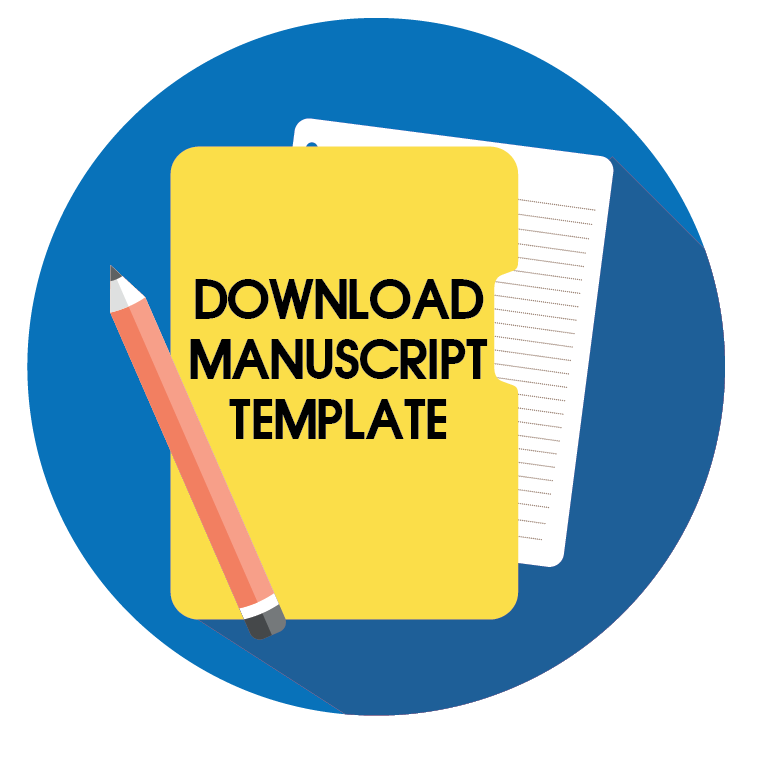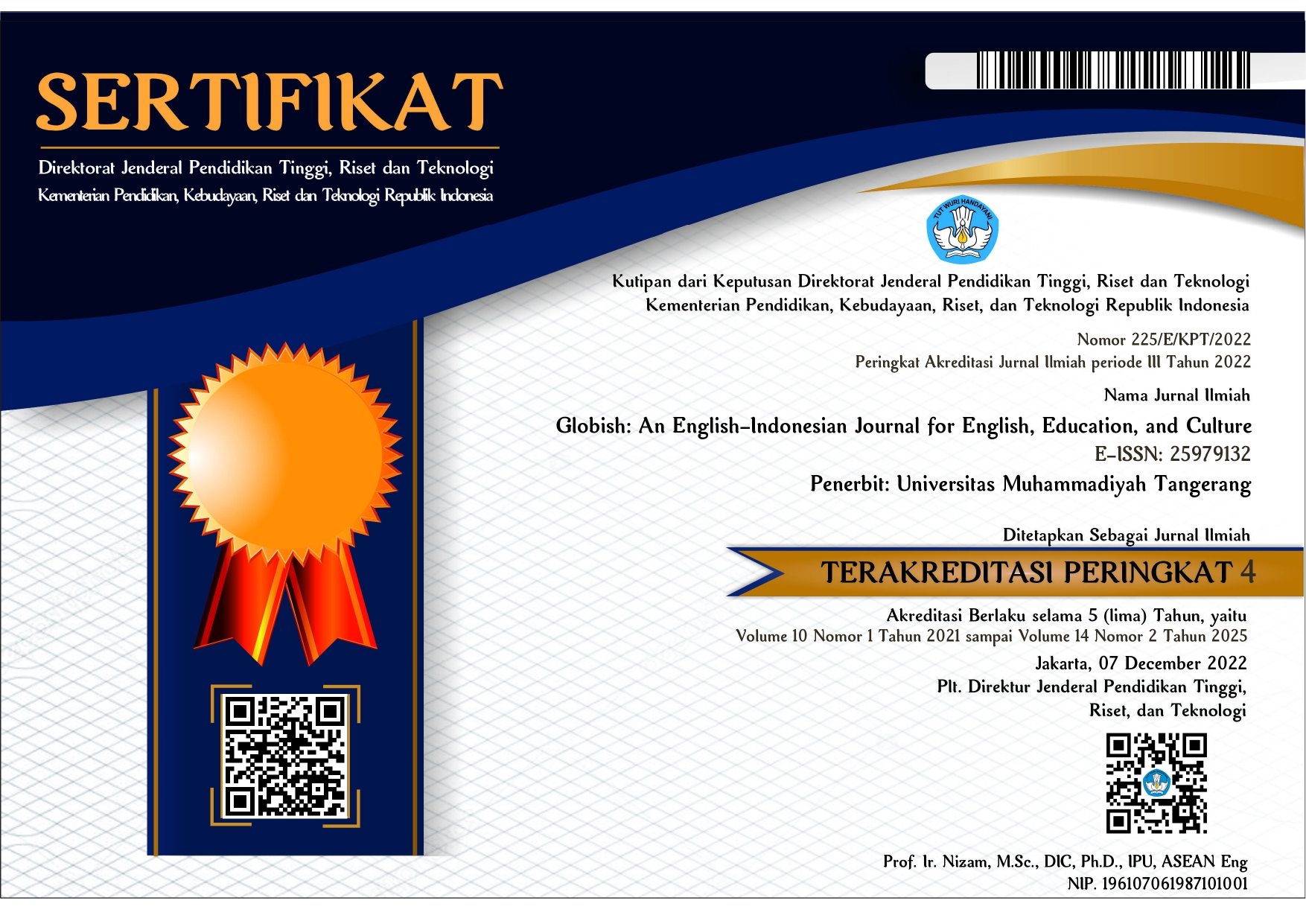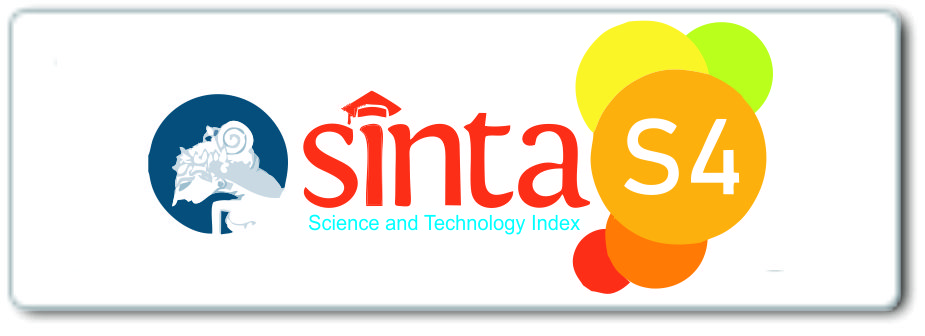AN INVESTIGATION OF ORAL READING FLUENCY OF TENTH GRADE IN ONE OF SENIOR HIGH SCHOOLS IN INDRAMAYU
Abstract
The purpose of this study is to investigate students oral reading fluency of tenth grade in one of Senior High Schools in Indramayu. According to Zuhra (2015) the students faced difficulties in English because of their poor vocabulary. The students also faced difficulties when the texts were long and complicated with various different modifying phrases. There are three subskills to measure oral reading fluency. As stated by Pey, et al (2014) there are ‘accuracy’. ‘speed’, and ‘prosody’. Case study is chosen as a research method in this study. Two instruments were used to collect the data. The first is oral reading fluency test, this was used to measure students’ fluency in oral reading. The second is questionnaire. It was used to find out the students’ reading interest and reading habit. After the writers got the data. Then it will be analyzed qualitatively. The results showed that there were 36 students who took the oral reading fluency test. But, unfortunately that almost all students were not fluent in oral reading. The lowest score obtained by students in reading rate is 58 wpm. While for reading accuracy the lowest score obtained by students is 0,7 wc. And the lowest score obtained by students in reading prosody is 4. In reading prosody, almost all students get score of 4. It is because there are still many students who read only if they have to and they read not for own pleasure. Meanwhile, only two students out of thirty-six students who are almost fluent reading are able to do oral reading fluency. Have fluency in oral reading the students have practiced reading a lot. With reading rate 110 wpm and 127 wpm, reading accuracy 0,95 wc and 0,91 wc, and reading prosody are 9 of out 16.
Keywords
Full Text:
PDFReferences
Breznitz, Z. (2006). Fluency in Reading Synchronization of Processes. Mahwah, New Jersey: Lawrence Erlbum Associates.
Broughton, G., Brumfit, C., Flavell, R., Hill, P., & Pincas, A. (2003). Teaching English as a Foreign Language. USA and Canada: Routledge.
Caldwell, J. S. (2008). Rading Assessment a Primer for Teachers and Coaches (2nd ed.). New York/London: The Guilford Press.
Estrada, J. C. A. (2016). The Level of English Oral Reading Fluency among Abot-Alam Secondary Learners. World Journal of English Language, (6)3, 1925-0711.
Harmer, J. (2001). How to Teach English. Malaysia: Longman.
Kocaarslan, M. (2017). A Research About Oral Reading Fluency of First Grade Students: Text Type and Gender Factor. Journal of Education and Practice. 8(23), 40-51.
McDuffie, K. A., & Scruggs, T. E. (2008). The contributions of qualitative research to discussion of evidence-based practice in special education. Intervention in School and Clinic, 44, 91–97. doi:10.1177/1053451208321564.
National Reading Panel. (2000). Report of the National Reading Panel: Teaching children to read. Report of the subgroups. Washington, DC: US Department of Health and Human Services, National Institutes of Health.
Penner-Wilger, M. (2008). Reading Fluency: A Bridge from Decoding to Comprehension. Retrieved from http://edtechpartners.com/wp-content/uploads/2013/10/Fluency_Research.pdf
Pey, K. D., Min, L. H., & Wah, L. L. (2014). Relationship Between Oral Reading Fluency and Reading Comprehension among ESL Students. Journal of Language Studies, 14(3), 19-32.
Pretorius, E. J., & Spaull, N. (2016). Exploring Relationships Between Oral Reading Fluency and Reading Comprehension Amongst English Second Language Readers in South Africa. Springe. doi 10.1007/s11145-016-9645-9.
Samuels, S. J. (1988). Decoding and automaticity: Helping poor readers become
automatic at word recognition. The Reading Teacher, 41, 756–760.
Sinambela, S. E. (2017). Prosody as a Tool for Assessing Reading Fluency of Adult ESL Students. Advances in Language and Literary Studies. 6(8), 83-87. doi 10.7575/aiac.alls.
Willis, J. (2008). Teaching the Brain to Read: Strategies for Improving Fluency, Vocabulary, and Comprehension. USA: Association for Supervision and Curriculum Development.
Zuhra. (2015). Senior high school students’ difficulties in reading comprehension. English Education Journal (EEJ), 6(3), 424-441.
DOI: http://dx.doi.org/10.31000/globish.v10i1.3899
Article Metrics
Abstract - 2426 PDF - 586Refbacks
- There are currently no refbacks.
Globish
Program Studi Pendidikan Bahasa Inggris
Fakultas Keguruan dan Ilmu Pendidikan
Universitas Muhammadiyah Tangerang
Jl. Perintis Kemerdekaan I/33, Cikokol
Kota Tangerang, Indonesia
e-mail: globish_journal@umt.ac.id
Globish (p-ISSN: 2301-9913 | e-ISSN: 2301-9913) is licensed under a Creative Commons Attribution-ShareAlike 4.0 International License.









